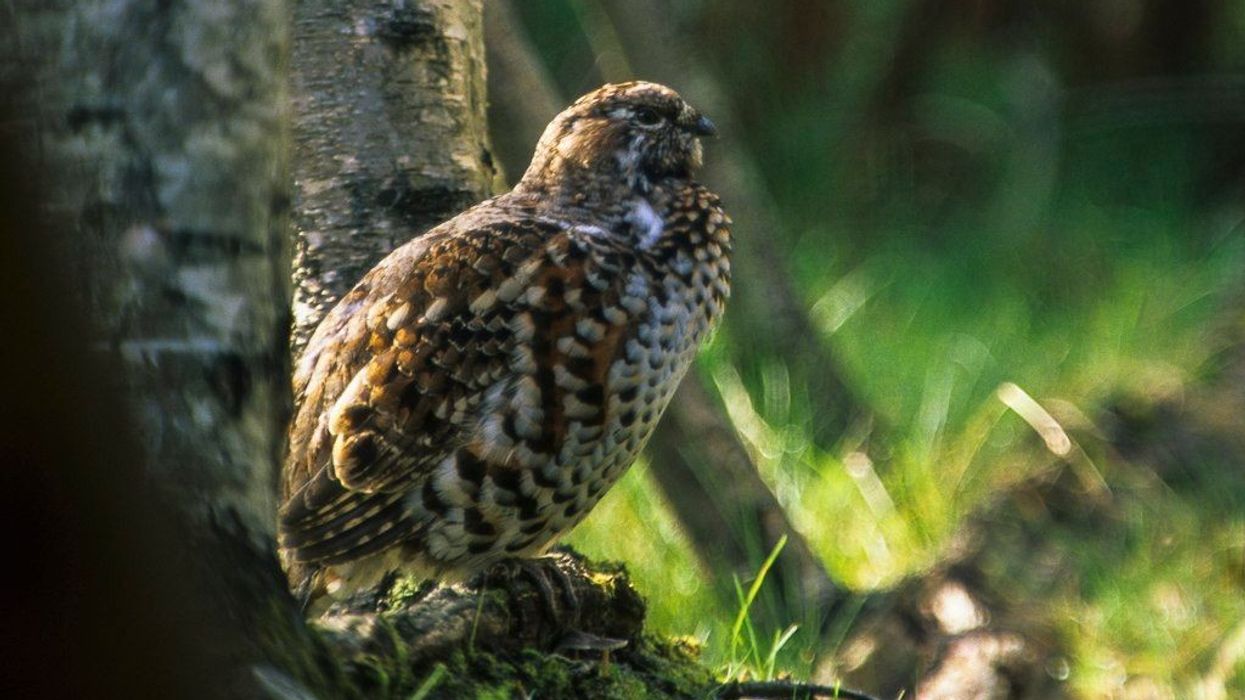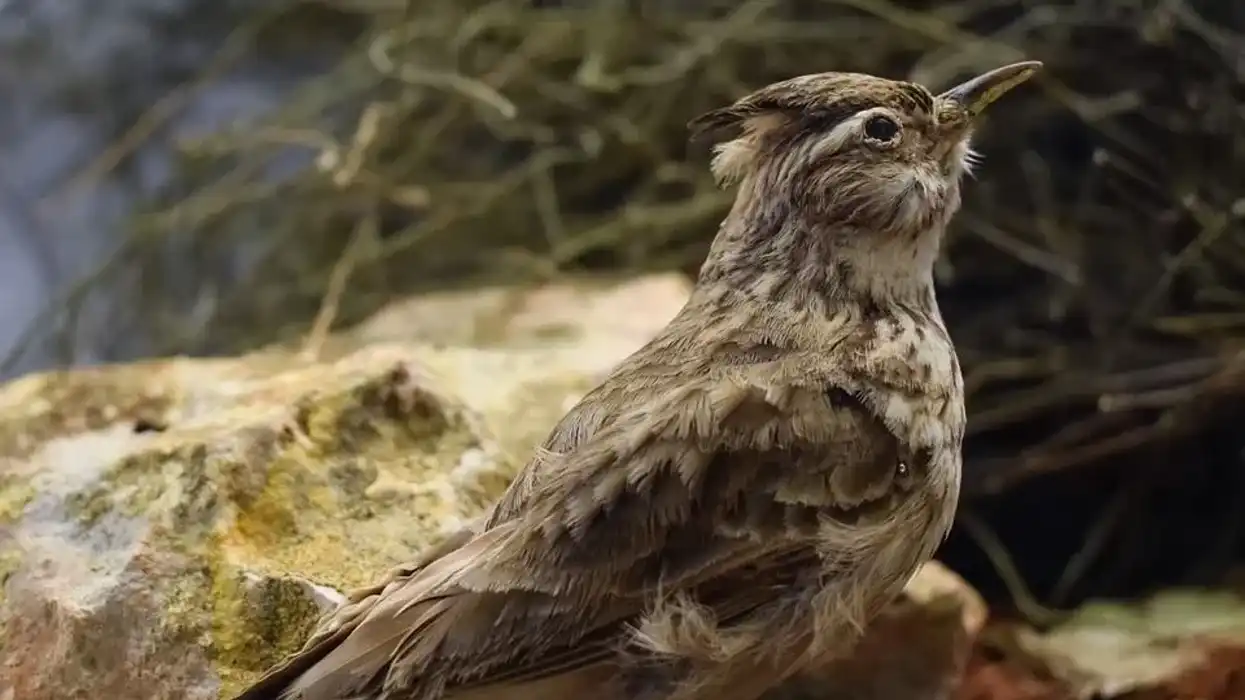All the birds from the Sturnella and the Leistes genus (order Passeriformes, family Icteridae) are called meadowlarks. Western meadowlarks are popular for their pretty yellow breast with a black V-pattern on them, while red-breasted blackbirds are known for their bright red breast and throat.
Meadowlarks are native to the United States, and grasslands are their primary habitat. Throughout North and South America, they are spotted in prairies, pastures, marsh edges, farmlands, and mountain meadows.
This ground-dwelling bird prefers to build their nest on the ground, surrounded by tall grass. However, each species have its preferences for the density of grass in their range.
A meadowlark mainly feeds on insects, however, they can consume seeds, and grains as well. The female meadowlark builds the nest with coarse grass, lined with fine grass.
Their breeding season takes place between May and August, and up to 14 eggs are laid per season. Meadowlarks are gorgeous-looking birds due to their brightly yellow or red-colored breast and pointed bill, and black, brown, and white spotted patterns on their wings.
To learn more, we have collected a set of interesting meadowlark facts for you to read. You can also learn more about these fascinating North American birds by reading more articles on the eastern meadowlark and the western meadowlark.
Meadowlark Interesting Facts
What type of animal is a meadowlark?
Meadowlarks are a group of grassland-dwelling birds from the Sturnella genus and Leistes genus of the Icteridae family.
What class of animal does a meadowlark belong to?
Meadowlarks belong to the class Aves of the Animalia kingdom.
How many meadowlarks are there in the world?
According to the International Union For Conservation of Nature (IUCN) Red List, there are approximately 37 million eastern meadowlarks in the world. However, the population strength of both the western meadowlarks and eastern meadowlarks is decreasing. On the other hand, some birds from the Leistes genus, such as the Peruvian meadowlark and the long-tailed meadowlark, have a stable population.
Where does a meadowlark live?
Meadowlark birds are seen throughout the United States. Eastern meadowlarks are seen in countries such as Panama, Mexico, Costa Rica, Columbia, Brazil, and the Caribbean Islands. Western meadowlarks are more common in North American countries. Peruvian meadowlarks are mostly spotted in South American countries such as Peru, Ecuador, and Chile.
What is a meadowlark habitat?
Meadowlark birds' primary habitat is grasslands. Apart from this, they are found in prairies, pastures, meadows, marsh edges, orchards, farmlands, and dessert grasslands. Meadowlarks can live in both tropical and temperate climatic conditions.
They are found in mountain meadows up to 10,000 feet (3 km) above sea level. Eastern meadowlarks select an open ground, surrounded by tall grass, as their nesting and breeding site. On the other hand, Western meadowlarks prefer much thinner grass in their range.
Their migration mostly depends on their range. Species residing in extremely cold climates of Northern ranges migrate to Southern parts in winter and can travel as far as 621.3 miles (1000 km).
Who do meadowlarks live with?
Meadowlarks are gregarious birds. In the winter, they form flocks, primarily with birds from the same species. However, they can merge with starlings and other blackbirds as well.
How long does a meadowlark live?
Eastern meadowlarks live up to nine years in the wild and between three and five years in captivity, with a proper diet, including insects. Furthermore, western meadowlarks can live up to 10 years in captivity.
How do they reproduce?
Both eastern and western meadowlarks follow the polygynous mating system, where males mate with more than one female. Their breeding season takes place between late spring in May and August. They engage in an aerial chase, right after the female bird selects her mating partner.
Female meadowlarks prepare their nest on the ground in open grasslands, with the help of their bill. The nest is prepared using coarse and fine grasses. The pair protects their nest together.
Females lay up to 14 meadowlark eggs per clutch and chicks hatch after a gestation period of 13-15 days. The chicks gain sexual maturity at the age of 12 months.
What is their conservation status?
In the International Union For Conservation of Nature (IUCN) Red List, most of the species including the red-breasted blackbird, Peruvian, long-tailed, and western meadowlark have been listed as a species of Least Concern. However, Pampas meadowlarks are listed as a Vulnerable species, and eastern meadowlarks as a Near Threatened species, due to their decreasing population strength.
Meadowlark Fun Facts
What do meadowlarks look like?

Meadowlarks are medium-sized birds, covered with beautiful yellow, brown, black, and white feathers. Eastern meadowlarks look stunning with their dark brown colored eyes, black breast band, and light gray bill, which also helps in making their nest.
Females are paler in appearance than males and have narrower breast bands. The western meadowlark is identified by a black V shape on its breast. It also has a head striped with black and light brown bands.
A red-breasted blackbird stands unique among them, with its bright red belly and throat. Their wings are relatively shorter than their body size.
How cute are they?
Meadowlarks are adorable. Their pleasant calls on a spring morning feel like a charm, and their gorgeous yellow breast makes them a treat for the eyes.
How do they communicate?
Meadowlarks communicate with various calls and songs including whistles, chatters, weets, flight songs, begging notes, and location notes. They perform the 'dzert' calls when they are disturbed and whistle to alert other members of the flock. A meadowlark call in the morning can be quite pleasing to the ears.
How big is a meadowlark?
Typically a meadowlark bird is 6.3-10.2 in (16-26 cm) in length and they have a wingspan of 13.7-16.1 in (35-41 cm). They are slightly larger than an Indian blackbird, which can grow up to 7.9 in (20 cm) in length.
How fast can a meadowlark fly?
Meadowlarks are migratory birds. They form flocks and fly to their winter range together. However, the exact speed at which they fly is as yet unknown.
How much does a meadowlark weigh?
With proper nutrition, a meadowlark bird weighs around 3.1-5.2 oz (90-150 g). They are slightly heavier than a common blackbird, weighing 2.8-4.4 oz (80-125 g).
What are the male and female names of the species?
Similar to other bird species, a male meadowlark is called a cock, and a female is called a hen.
What would you call a baby meadowlark?
A newborn meadowlark is called a chick.
What do they eat?
Meadowlarks (order Passeriformes, family Icteridae) are omnivorous birds, primarily feeding on insects. They prey on various insects such as caterpillars, beetles, grasshoppers, cutworms, and crickets. Their plant-based diet includes berries, wild fruits, seeds, and corn. Western meadowlarks prepare for winter by foraging for seeds and grains.
Are they aggressive?
Meadowlarks are known for their gentle behavior. These gregarious birds fly and feed in flocks. However, they can display aggressive behavior while defending their territory.
Would they make a good pet?
Meadowlarks are migratory wild birds and can't be kept as pets. They are also protected by the Migratory Bird Treaty Act in the United States of America. Thereby, capturing them can turn out to be a very bad idea.
Did you know...
Meadowlark facts talk about how they are the first songbirds to be heard in spring. A western meadowlark is mostly heard making bell-like 'pluk' sounds while they are engaged in territorial displays.
Is a meadowlark a lark?
A meadowlark is not a lark. Larks are passerine birds from the Alaudidae family while meadowlarks are songbirds from the Icteridae family.
Do female meadowlarks sing?
Due to insufficient data, it's unclear whether a female meadowlark sings or not. However, ornithologists have perceived that females make soft rattle calls when they're performing courtship displays or laying eggs.
What does a meadowlark symbolize?
A meadowlark is symbolized as a bearer of positivity, hope, and enlightenment.
Here at Kidadl, we have carefully created lots of interesting family-friendly animal facts for everyone to discover! Learn more about some other birds including lark sparrow facts and goose facts.
You can even occupy yourself at home by coloring in one of our free printable Meadowlark coloring pages.










